Introduction: Why Agile Transformation Matters
In today’s rapidly evolving business landscape, organizations must adapt quickly to stay competitive. Traditional project management methods often fall short in speed, flexibility, and customer alignment, leading to missed deadlines, budget overruns, and dissatisfied stakeholders.
Agile transformation is the solution—a customer-centric, iterative approach that enables businesses to:
✔ Deliver value faster
✔ Enhance collaboration
✔ Respond to market changes effectively
At Apstax Solutions, we specialize in helping organizations successfully implement Agile through training, coaching, and strategic frameworks.
This 2,500-word guide covers:
✅ The Agile mindset & leadership alignment
✅ Overcoming common Agile challenges
✅ Building high-performing Agile teams
✅ Change management strategies
✅ Measuring Agile success
✅ Scaling Agile across the enterprise
By the end, you’ll have a step-by-step roadmap for Agile implementation.
1. Understanding the Agile Mindset
What Does It Mean to “Be Agile”?
Agile is not just a methodology—it’s a cultural shift that prioritizes:
🔹 Customer collaboration over rigid contracts
🔹 Adaptive planning over fixed roadmaps
🔹 Empowered teams over top-down control
Key Steps to Cultivate an Agile Mindset
1. Leadership Alignment
- Why it matters: Without leadership buy-in, Agile adoption fails.
- How to achieve it:
- Conduct executive Agile workshops
- Showcase case studies (e.g., Spotify, Amazon)
- Align Agile goals with business objectives
2. Educational Initiatives
- Agile training programs for teams (Scrum, Kanban, SAFe)
- Certifications (CSM, PMI-ACP) to build expertise
- Lunch-and-learn sessions to reinforce Agile principles
3. Shift from “Process-First” to “People-First”
- Encourage cross-functional collaboration
- Replace micromanagement with autonomy
- Promote continuous learning
2. Addressing Common Agile Challenges
| Challenge | Solution | Real-World Example |
|---|---|---|
| Resistance to Change | – Communicate “Why Agile?” clearly – Start with a pilot team | Microsoft shifted from Waterfall to Agile by running small-scale experiments |
| Communication Barriers | – Use daily stand-ups – Implement collaboration tools (Slack, Jira) | Spotify uses “Squad” models for seamless teamwork |
| Lack of Customer Involvement | – Schedule frequent demos – Embed customer reps in Agile teams | Airbnb iterates based on real user feedback |
| Unclear Roles | – Define Scrum Master, Product Owner, Dev Team responsibilities | Tesla uses Agile roles to accelerate innovation |
3. Forming High-Performing Agile Teams
Critical Elements of Agile Teams
1. Role Definitions
- Scrum Master: Facilitates Agile processes, removes blockers
- Product Owner: Prioritizes backlog, represents customer needs
- Development Team: Self-organizing, cross-functional experts
2. Team Empowerment
- Autonomy: Let teams decide how to achieve goals
- Psychological Safety: Encourage risk-taking & learning
- Shared Accountability: Foster collective ownership
3. Agile Ceremonies
- Sprint Planning (Define goals)
- Daily Stand-Ups (15-minute syncs)
- Sprint Reviews (Demo work to stakeholders)
- Retrospectives (Improve processes)
4. Change Management Strategies for Agile Adoption
Proven Strategies
1. Incremental Adoption
- Start with one team/department
- Scale after proving success (e.g., IBM’s Agile rollout)
2. Continuous Feedback Loops
- Bi-weekly retrospectives to refine processes
- 360-degree feedback from teams & stakeholders
3. Celebrate Small Wins
- Recognize early successes to boost morale
- Example: Amazon’s “Two-Pizza Teams” celebrate iterative wins
5. Measuring Agile Success: Key Metrics
| Metric | What It Measures | Ideal Benchmark |
|---|---|---|
| Velocity | Work completed per Sprint | Consistent improvement |
| Cycle Time | Time from task start → finish | Shorter = Better |
| Customer Satisfaction (CSAT) | End-user happiness | ≥ 85% positive feedback |
| Defect Rate | Bugs per release | Trending downward |
| Team Happiness | Employee engagement | Regular pulse surveys |
6. Scaling Agile Across the Enterprise
Frameworks for Scaling Agile
| Framework | Best For | Example |
|---|---|---|
| SAFe (Scaled Agile Framework) | Large enterprises | Cisco, Boeing |
| LeSS (Large-Scale Scrum) | Simpler scaling | Spotify (early days) |
| Spotify Model | Autonomous squads | Spotify, ING Bank |
Tips for Scaling Successfully
- Align Agile with business goals
- Invest in Agile coaches
- Use hybrid models (Agile + DevOps)
Conclusion: Agile is a Journey, Not a Destination
Implementing Agile is a cultural transformation—not just a process change. Companies that succeed:
✔ Start small, scale smart
✔ Empower teams
✔ Measure what matters
At Apstax Solutions, we help businesses navigate Agile transformation with:
- Customized Agile training
- Scaling frameworks (SAFe, LeSS)
- Ongoing coaching & support
🚀 Ready to transform your organization? Contact us at (614)-434-6655 or david@goapstaxsolutions.com!
FAQs: Agile Implementation Explained
1. How long does Agile transformation take?
- 3-6 months for team-level adoption
- 1-3 years for enterprise-wide scaling
2. Can Agile work in non-IT departments?
Yes! Agile applies to HR, marketing, finance, and operations.
3. What’s the #1 reason Agile fails?
Lack of leadership support. Executives must champion Agile.
4. How do we measure Agile ROI?
Track faster delivery, higher quality, and improved customer satisfaction.
5. What’s the difference between Scrum and Kanban?
- Scrum: Time-boxed Sprints (2-4 weeks)
- Kanban: Continuous flow (no Sprints)
6. Why choose Apstax Solutions for Agile coaching?
We offer proven frameworks, veteran coaches, and real-world case studies.
Unlock Agile Success with Apstax Solutions
Agile transformation boosts efficiency, innovation, and customer satisfaction. Whether you’re a startup or Fortune 500, Apstax Solutions can guide your journey.
📞 Call (614)-434-6655 or email david@goapstaxsolutions.com today!






